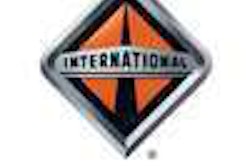Taking note of recent fuel spikes around the world, Isuzu Commercial Trucks used a recent visit to Japan to showcase its Fuel Economy Challenge. The truck maker used its test track near the coastal town of Tomokami on the island of Hokkaido to demonstrate proper driving techniques for visiting North American truck editors.
A 30 percent fuel economy boost in less than an hour: Our day at the track started in the classroom and then moved outdoors for a familiarization lap around the short (by American standards) 4.4-kilometer track. Then it was time to run a lap to establish a baseline for comparison purposes. Todd Bloom, Isuzu’s vice president of North American operations, advised us to drive the trucks “like we’d stole ’em.”
The truck was a right-hand-steer Japanese domestic model, complete with manual transmission. I’m a southpaw. But any presumed advantage this little genetic trait offered was minimal. Left-handed or not, I just couldn’t nail the gears on that first run. As a consequence, turning in a lap with poor fuel economy proved to be rather easy for me.
Once everyone had made their runs, it was back to the classroom, this time to go over proven driving methods Isuzu has determined can greatly increase fleet fuel economy. The message, at its core, is one that all good fleet managers know well: The single biggest contributor to, or detractor from, a truck’s fuel economy is the driver.
That’s why Isuzu’s Fuel Economy Challenge focuses on nine separate driver actions: things like RPM shift points, gear selection, accelerator inputs, braking habits (including intelligent use of exhaust brakes), speed limits and idling practices.
Following these guidelines, my fuel economy improvement was impressive. On my initial run, I logged 13.25 miles per gallon. On my post-briefing second run, this average rose to 17.2 miles per gallon – a 30 percent overall fuel economy improvement.
Easier measuring and monitoring of drivers: Tracking, comparing, analyzing and grading all the data that flowed in from the nine different improvement areas was Isuzu’s GPS/Internet-based Mimamori onboard diagnostic system.
Mimamori has been in service in Japan for two years, and the company plans to bring it into North America in the near future. Once the system is installed in your fleet, Mimamori can provide you with easy-to-read and useful data on each truck and driver for about $8 a month. You can request weekly, monthly or yearly driver performance reports, warnings when a driver deviates from pre-set operating criteria, or warnings when the computer senses a crash or other dangerous situation. Reports can be sent to personal computers or cell phones.
Driver printouts show actual driving practices in easy-to-understand graphics and offer advice to improve driving habits. Bad drivers can be detected before accidents occur, and good drivers can be coached and rewarded for delivering optimal fuel economy. In some instances, Isuzu projections suggest Mimamori can save fleets as much as $8,000 per year in fuel costs per truck. Information is power, the old saying goes. And systems like Mimamori are revolutionizing your ability to manage and coach drivers. And in this age of $4 per gallon fuel, it’s a tool that’s time has come.








